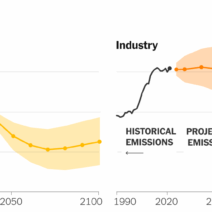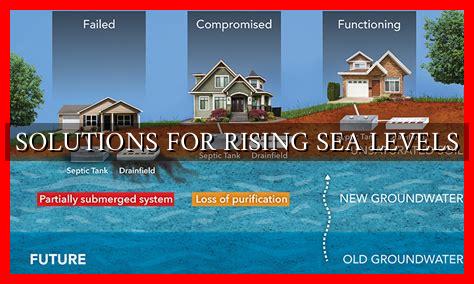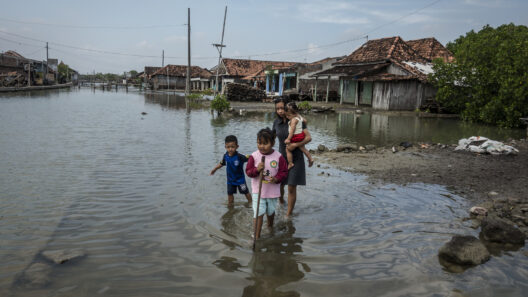The phenomenon of rising sea levels has garnered considerable attention as one of the most pressing environmental challenges of our time. While often perceived as an abstract concept, the reality of this issue is stark: coastal cities, ecosystems, and entire nations are at risk of unprecedented flooding. The factors contributing to this unsettling trend are rooted in climate change, urbanization, and the depletion of natural barriers. To understand how to stop the sea level from rising, it is imperative to explore the multifaceted solutions available to society today.
To combat this daunting reality, we must appreciate the intricate web of issues that intertwine to create the rising sea levels expanding across the globe. Among them, the increasing greenhouse gas emissions and melting polar ice caps stand out. However, the conversation needs to shift from mere acknowledgment to actionable strategies that can be embraced on local, national, and global scales.
Here, we explore viable solutions that range from innovative technology to community engagement, all of which play a crucial role in mitigating the impacts of rising ocean levels.
Innovative Coastal Engineering Solutions
The built environment offers the first line of defense against the encroaching seas. Innovative coastal engineering solutions aim to fortify our shorelines through advanced techniques and materials, ensuring they withstand the relentless advance of saltwater.
The concept of “living shorelines” incorporates natural elements such as marshes, mangroves, and oyster reefs into coastal infrastructure. By mimicking natural processes, these solutions buffer coastal areas from storm surges while promoting biodiversity. Unlike traditional seawalls, which can exacerbate erosion, living shorelines provide a sustainable approach to protect habitats and human settlements alike.
Additionally, engineered systems such as sea walls and levees can be enhanced with emerging technologies. For instance, automated sensors can monitor structural integrity and shifting sediment patterns, enabling preemptive maintenance with minimal disruption. Innovations in materials, such as the use of geo-synthetic fabrics, allow for lighter, more durable structures that can adapt to changing environmental pressures.
Strategic Urban Planning for Resilience
Urbanization has led to considerable pressure on coastal regions, making it essential for cities to embrace resilience as a guiding principle in urban planning.
Mixed-use developments, green roofs, and porous pavements represent just a fraction of methods that urban planners can employ to reduce stormwater runoff and enhance natural infiltration. By increasing greenery in urban areas, these practices not only mitigate the urban heat island effect but also provide significant buffer zones against flooding.
Moreover, implementing zoning laws that restrict development in high-risk areas is paramount. Communities can invest in sustainable infrastructure that prioritizes long-term ecological viability over short-term economic gain. Such planning should prioritize the relocation of crucial facilities and homes away from vulnerable coastal zones, thereby reducing future displacement risks.
Empowering Communities through Awareness and Action
Raising public awareness and fostering community engagement are crucial components in the fight against rising sea levels. Individuals often underestimate their role in causing and combatting climate change, rendering participation paramount.
Educational campaigns focusing on the implications of rising sea levels can mobilize community action. Schools, local organizations, and businesses can unite to create initiatives for reducing individual carbon footprints. From simple actions, such as reducing energy consumption to advocating for sustainable transportation, every effort contributes to a collective goal.
Moreover, community resilience plans wherein locals identify vulnerabilities specific to their regions can proactively address potential threats. By organizing workshops and forums, citizens can glean information about available resources while also gaining insight into mitigating strategies from experts and fellow community members.
Policy Advocacy and Government Action
The role of government at all levels is critical in addressing the multifaceted challenges of rising sea levels. Policymakers must prioritize climate policy that encourages sustainable practices across various sectors.
Investing in green technologies and renewable energy sources such as wind, solar, and geothermal power can significantly reduce greenhouse gas emissions driving climate change. Furthermore, incentivizing energy-efficient practices across industries will promote a cultural shift toward sustainability.
International cooperation must also be embraced in addressing this global challenge. Through treaties and collaborative frameworks, nations can share ideas, technologies, and financial resources essential for combating rising sea levels. In this vein, entities like the United Nations can facilitate discussions on climate action that hold countries accountable while fostering innovation and adaptation.
Preserving Nature’s Solutions: Ecosystem Restoration
Finally, a vital yet often overlooked solution is the restoration of natural ecosystems. Healthy ecosystems, like wetlands, coastal forests, and coral reefs, perform invaluable services, acting as barriers against flooding while also storing carbon effectively.
Restoring these ecosystems involves replanting native vegetation, removing invasive species, and re-establishing hydrological flows disrupted by human activities. The benefits of restoration extend far beyond reducing sea level rise; they enhance local biodiversity and provide recreational opportunities for communities.
In conclusion, stopping the rise of sea levels requires an integrated approach that encompasses advanced engineering, sustainable urban planning, community empowerment, proactive government policy, and the restoration of our invaluable natural ecosystems. Each facet of this multifaceted dilemma binds together the need for immediate action and collaborative efforts. As the ocean levels rise, let the actions taken today echo future generations, reminding them of our resolve to protect both our cherished coastlines and the planet as a whole.






